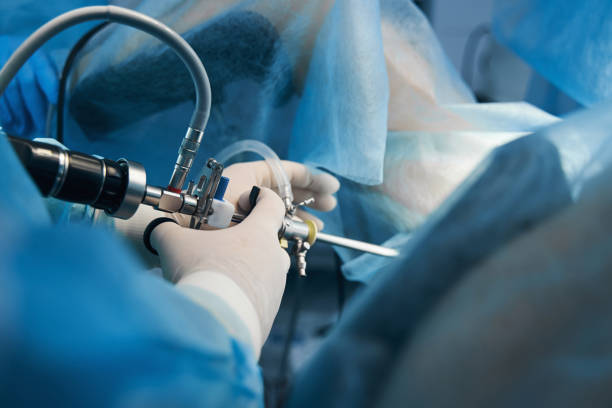The endoscope is a medical device that is used to view the internal organs of the body. It is a long, thin tube with a camera on the end that can be inserted into the body through an opening such as the mouth, nose, or rectum. Endoscopes are used for a variety of purposes, including diagnosing and treating medical conditions. The endoscope market is growing rapidly, driven by advances in technology and an increasing demand for minimally invasive procedures.
Market Overview
Worldwide revenue from the endoscope market was about US$ 13.9 Billion in 2022, with the global market estimated to surge ahead at a CAGR of 6.3% to reach a valuation of US$ 27.3 Billion by the end of 2033. North America dominates the market, followed by Europe and Asia-Pacific. The rise in the geriatric population, the increasing prevalence of chronic diseases, and the demand for minimally invasive surgeries are some of the factors driving the growth of the market. The market is highly competitive, with major players investing in research and development to develop new and advanced products.
Types of Endoscopes
There are different types of endoscopes used for various medical procedures. The most common types of endoscopes are:
- Gastrointestinal (GI) Endoscopes: These are used to view the digestive system, including the esophagus, stomach, and intestines. They are used to diagnose conditions such as ulcers, inflammation, and cancer.
- Bronchoscopes: These are used to view the respiratory system, including the lungs and airways. They are used to diagnose conditions such as lung cancer, chronic obstructive pulmonary disease (COPD), and pneumonia.
- Laparoscopes: These are used to view the inside of the abdomen and are often used in surgical procedures. They are used to diagnose and treat conditions such as appendicitis, gallstones, and ovarian cysts.
- Arthroscopes: These are used to view the inside of joints and are often used in orthopedic surgeries. They are used to diagnose and treat conditions such as torn ligaments, cartilage damage, and arthritis.
- Urology Endoscopes: These are used to view the urinary tract and are used to diagnose and treat conditions such as kidney stones, bladder cancer, and prostate cancer.
Technological Advances
The endoscope market is driven by technological advances, such as high-definition imaging, 3D imaging, and robot-assisted procedures. High-definition imaging provides clearer and more detailed images, which can help doctors make more accurate diagnoses. 3D imaging provides a more realistic view of the internal organs, which can help doctors plan and perform surgeries more accurately. Robot-assisted procedures are becoming increasingly common, as they allow doctors to perform procedures with greater precision and control.
One of the major technological advances in endoscopy is the development of wireless endoscopes. These endoscopes do not require a cable to connect the camera to the display, making them more convenient and easier to use. They also eliminate the risk of cable damage and infection transmission.
The development of disposable endoscopes is another technological advance in the market. Disposable endoscopes are designed for single-use and are discarded after each procedure, eliminating the risk of infection transmission.
Despite the growth of the endoscope market, there are several challenges that need to be addressed. One of the major challenges is the high cost of endoscopes. Endoscopes are expensive, and the cost can be a barrier to access for patients in developing countries. Additionally, the cost of maintenance and repair can be high, which can be a burden for healthcare providers.
Another challenge in the market is the risk of infection transmission. Endoscopes are reusable medical devices, and if not properly cleaned and sterilized, they can transmit infections from one patient
What Factors Will Drive the Market to Grow Over the Forecast Period?
The endoscope market is expected to grow over the forecast period due to several factors. Some of the key drivers of growth include:
- Rising Prevalence of Chronic Diseases: Chronic diseases such as cancer, gastrointestinal disorders, and respiratory diseases are on the rise globally. Endoscopes are used in the diagnosis and treatment of these conditions, driving the demand for endoscopes.
- Increasing Geriatric Population: The aging population is more prone to diseases and requires more frequent medical interventions. Endoscopes are often used to diagnose and treat conditions in the elderly population, leading to increased demand for these devices.
- Technological Advancements: As mentioned earlier, the endoscope market is driven by technological advancements such as high-definition imaging, 3D imaging, and robot-assisted procedures. These advancements are improving the accuracy and efficiency of endoscopic procedures, leading to increased adoption of these devices.
- Minimally Invasive Procedures: There is a growing preference for minimally invasive procedures as they offer several benefits such as shorter hospital stays, faster recovery times, and reduced risk of complications. Endoscopes are minimally invasive devices and are increasingly being used for diagnostic and therapeutic purposes, driving the growth of the market.
- Favorable Reimbursement Policies: Governments and healthcare providers are increasingly offering reimbursement for endoscopic procedures, making these procedures more affordable and accessible to patients. This is expected to drive the demand for endoscopes over the forecast period.
- Increasing Healthcare Expenditure: Healthcare expenditure is on the rise globally, particularly in developing countries. This is expected to increase the demand for medical devices such as endoscopes, driving the growth of the market.
Overall, the endoscope market is expected to grow over the forecast period due to a combination of demographic, technological, and economic factors. However, the market also faces several challenges such as high costs and the risk of infection transmission, which need to be addressed to ensure sustained growth in the future.
